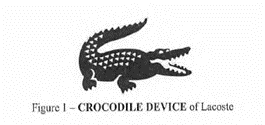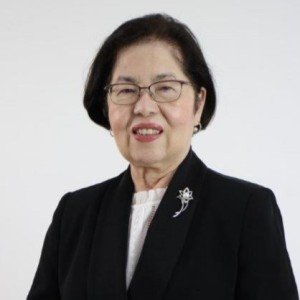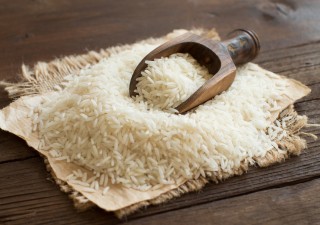War of the crocodiles
31 August 2024

In the case of Lacoste S.A. v. Crocodile International Pte Ltd., G.R. No. 223270 decided by the Philippine Supreme Court on November 6, 2023, but uploaded to its website only on September 10, 2024, the Supreme Court ruled that there is no confusing similarity between the two trademarks, shown below:
|
Lacoste |
Crocodile International |
 |
 |
The case facts are as follows: Lacoste, a limited liability French company, is the registered owner of the mark “CROCODILE DEVICE” in the Philippines under Trademark Registration No. 64239 for goods and services covered by Classes 1 to 42 of the Nice Classification. Lacoste began using the said mark in the Philippines as early as 1963, when its clothing apparel was first marketed in the country.
Crocodile International is a Singaporean corporation and its mark CROCODILE AND DEVICE was first registered in 1949 in Singapore and started exporting to the Philippines in 2002.
On December 27, 1996, Crocodile filed before the Bureau of Patents, Trademarks, and Technology Transfer (now the Intellectual Property Office of the Philippines [IPOPHL]) Trademark Application No. 4-1996-116672 for the mark “CROCODILE AND DEVICE” covering goods in Class 25, which was opposed by Lacoste, on the ground that it is confusingly similar to its Crocodile mark.
Defending itself, Crocodile argued that:
- Its Crocodile and Device mark is different from Lacoste’s in appearance and general commercial impression: Lacoste’s mark is only a crocodile device facing the right, while its mark is a composite mark consisting of the stylized word mark “Crocodile” and facing left;
- Both marks are concurrently registered in about 25 other jurisdictions;
- The District Court of Japan, and the Divisional Court in Yangon, Myanmar, issued decisions ruling no confusing similarity between the said marks;
- Lacoste has written letters to Crocodile stating that there is no confusing similarity between the two marks and that they can co-exist. In view of this, the parties executed a Mutual Co-Existence Agreement in June 17, 1983.
Lacoste, however, for its part said that:
- There is confusing similarity and that the distinction on the direction as to which side the crocodile devices were facing were too minute to be noticed by the ordinary consumer;
- Crocodile’s mark is a mirror image of its own mark;
- There is no peaceful co-existence and that the 1983 Mutual Co-Existence Agreement did not apply to the Philippines based on the arbitration award concerning the interpretation of the geographical scope of the parties;
- As to the letters admitting that there is no confusing similarity, said letters were premised on the long concurrent use of the marks in other jurisdictions resulting in both marks acquiring distinctiveness, but that this is not relevant in the Philippines;
- It presented the results of the survey conducted by Consumer Vibe Asia, Inc. which concluded that there is confusing similarity between the contending marks, finding the “saurian figure as the distinctive element of both marks.
In a Decision dated December 21, 2009, by the IPO-BLA, applying both the dominancy and holistic tests, the IPO-BLA ruled that there is no confusing similarity because of the striking differences between Lacoste’s and Crocodile’s marks: Crocodile’s mark is a composite mark, with the word “Crocodile” in stylized font placed on top of the “saurian” figure. The IPO-BLA also pointed out that the Mutual Co-Existence Agreement, the judicial decisions in other jurisdictions, and Lacoste's letters to Crocodile support the conclusion that there is indeed no confusing similarity between Lacoste’s and Crocodile’s marks. For the expert witness presentation of its survey evidence called “The Project Copy Cat”, the IPO-BLA gave no weight to it because of its questionable credibility. Dissatisfied, Lacoste appealed the BLA decision to the Office of the Director General, then to the Court of Appeals, which appeals were denied.
The Supreme Court affirmed the Decision of the Court of Appeals and ruled that there is no confusing similarity between Lacoste’s and Crocodile’s marks because it is beyond dispute that the “saurian” figure is the dominant feature of both marks. Lacoste’s mark contains this sole element of the Crocodile Device. Crocodile’s mark, however, is a composite mark since it consists of a stylized word mark and the saurian design figure. The Supreme Court held that there are pronounced differences between Lacoste’s and Crocodile’s marks. Lacoste’s “saurian” figure is facing to the right, meaning the head is at the right side while the tail is at the left side, and is aligned horizontally. On the other hand, Crocodile’s “saurian” figure, is facing to the left, meaning the head is at the left side while the tail is at the right side. Furthermore, both the “saurian” figure and the word “Crocodile” in stylized format on top of it are tilted in that the right side’s alignment is higher than the left side. More significantly, the “saurian” figures in both marks are easily distinguishable from one another, considering that in Lacoste’s mark, the “saurian” figure is solid, except for the crocodile scutes (or bony external plates) found on the body and the base of the tail which are depicted in white inverted triangles. There are also crocodile scutes protruding from the tail of Lacoste’s “saurian” figure. Meanwhile, the “saurian” figure in Crocodile’s mark is not solid, but rather, more like a drawing. Further, unlike Lacoste’s “saurian” figure, Crocodile’s “saurian” figure does not have crocodile scutes, whether protruding or not; and instead, is depicted with various scale patterns from the base of the head up to the tail. It may be reasonably concluded that there exist distinct visual differences both in appearance and overall commercial impression.
But what about the so-called expert opinion of the entity which made the survey whether the marks are confusingly similar. While the Supreme Court has declared in earlier cases the importance of survey evidence in establishing a likelihood of confusion in trademark disputes, the issue of trustworthiness is paramount, citing the Manual for Complex Litigation of the Federal Judicial Center, holding that its Decision in the Ginebra case does not apply to the case at bar because of differences in the set of facts. First, in the testimony of Salvino-Feldia of Consumer Vibe Asia, Inc., an expert witness who delivered a presentation of The Project Copy Cat before the IPOPHL, she discussed that said survey was “conducted in [the Greater Manila Area] among 450 respondents,” without, however, clearly identifying the population size from which the representative sample of 450 respondents was selected. Second, while Salvino-Feldia indicated the sample size of 450 respondents, there was no discussion on whether this number is numerically representative of the relevant consuming public or if the same is “sufficiently large to contain a wide spectrum of personal attributes and behavior within the universe.”
Lastly, Salvino-Feldia testified that the survey entailed a face-to-face interview using a structured questionnaire. While some of these questions were mentioned in a scattered manner throughout Salvino-Feldia’s presentation, no list of all these questions, or even a copy of the questionnaire, was given for the IPOPHL or the court’s scrutiny. Hence, it cannot be definitively determined if the same were indeed framed or asked in a nonleading manner.
The Supreme Court quoted the IPOPHL-DG: “In trademark cases, particularly in ascertaining whether one trademark is confusingly similar to or is a colorable imitation of another, no set of rules can be deduced. Each case is decided on its own merits. As the likelihood of confusion of goods or business is a relative concept, to be determined only according to the particular, and sometimes peculiar, circumstances of each case, the complexities attendant to an accurate assessment of likelihood of such confusion requires that the entire panoply of elements constituting the relevant factual landscape be comprehensively examined.”
As a final note, the Supreme Court quoted with approval Senior Associate Justice Marvic M.V.F. Leonen’s Separate Concurring Opinion in Asia Pacific Resources International Holdings, Ltd. v. Paperone, Inc., where it is said that “[e]ven if products are found to be in the same market, in all cases of unfair competition, competition should be presumed. Courts should take care not to interfere in a free and fair market, or to foster monopolistic practices. Instead, they should confine themselves to prevent fraud and misrepresentation on the public.” Thus, absent showing of fraud and misrepresentation to the public, the court should allow enterprises, such as Crocodile in this case, to enter the Philippine market through, among others, the registration of their trademarks.
Based on the above, the Supreme Court denied Lacoste’s petition and affirmed the Decision of the Court of Appeals dated September 8, 2015, and the Resolution dated February 29, 2016, in CA-G.R. SP No. 137801.








